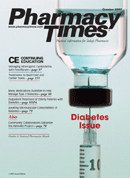Publication
Article
Pharmacy Times
Court Declines Again to Review Pact Delaying Entry of Generics
Author(s):
Dr. Fink is professor of pharmacy law and policy at the University of Kentucky College of Pharmacy, Lexington.
Issue of the Case
When a brand name manufacturer and a generic pharmaceutical firm settled a patent lawsuit with an agreement that permitted the generic firm to start marketing the medication that was the subject of the suit under a distributorship agreement, did that pact constitute an unlawful restraint of trade equivalent to an attempt to monopolize the market?
Facts of the Case
More than 15 years ago the generic manufacturer filed a lawsuit alleging that the brand name firm's patent on a chemotherapeutic agent was invalid. The generic firm won at the trial court level. To avoid a protracted and potentially expensive appeal through the federal court system, the 2 parties agreed to settle their patent lawsuit. The brand name manufacturer permitted the generic firm to start marketing a generic version of the medication under a distributorship contract. This linkage was to commence long before the patent in question was to expire. The generic firm also received a multimillion- dollar payment, as did the firm it had lined up to supply the active ingredient.
This agreement settling the patent lawsuit was attacked in a subsequent lawsuit filed by a group of consumers, who claimed that the pact between the 2 manufacturers calling for the generic firm not to introduce its version of the medication to the marketplace represented a conspiracy between competitors to restrain trade. The Sherman Antitrust Act of 1980, the nation's primary antitrust statute, prohibits any "contract, combination or conspiracy?that restrains trade." The argument centered on the consumers' view that the agreement resulted in the medication's remaining essentially a "single-source, monopoly product." In their view, the damage to competition existed because the product distributed by the generic firm was priced only 5% less than the brand name version, whereas in a typical situation generics are priced 30% to 80% below the brand name version.
In the second consumer-originated lawsuit, the federal trial court judge who had heard the case ruled that the agreement between the firms was not an unlawful restraint of trade. The US Court of Appeals for the Second Circuit agreed with the trial court judge: no restraint of trade had occurred.
The consumers petitioned the US Supreme Court to hear the case. Such a request is always a long shot. The Supreme Court receives 7500 requests in an average year for cases to be heard, yet it agrees to do so (grants certiorari) in only about 100 cases each year.
The Court's Ruling
The Supreme Court declined to hear the case. The justices did not issue a writ of certiorari indicating that they would consider the matter. Therefore, the decision of the next-lower court, the Court of Appeals, is unaffected; that ruling stands. Nonetheless, it is important to emphasize that a decision to deny certiorari does not necessarily indicate that the Court agrees with the ruling or reasoning of the lower court.
The Court's Reasoning
Although the Court has a practice of not indicating why certiorari was denied, several points deserve mention. First, to grant certiorari requires an affirmative vote of 4 of the 9 justices. So, any number fewer than 4 could have been in favor of hearing the case. The exact number is unknown because of the closed-door nature of the deliberations of the justices. Next, the Court's rules specify that "A petition for writ of certiorari will be granted only for compelling reasons." It is possible that the justices did not view this as a compelling legal issue. Third, a second case presenting somewhat similar issues arising from a contractual agreement to delay entry of a generic to the market was the subject of a petition for certiorari presented to the Court by the Federal Trade Commission (FTC) during the summer of 2006. In that case, the Court also declined to hear the case ( Pharmacy Times 2006 October;72:114).
It could well be that a case presenting a clear set of facts that would entice the justices to review the matter, by presenting important and crisp legal issues, has yet to make its way up through the federal court system. Perhaps the third time will be a charm for this issue.
The legal issues associated with these contracts delaying entry of generics to the marketplace have arisen within all 3 branches of government:
• The executive branch, with the FTC and its efforts to counter such practices as anticompetitive
• The judicial branch, with a number of cases being considered in the federal courts
• The legislative branch, with a number of proposals in Congress at this writing to address the issue







